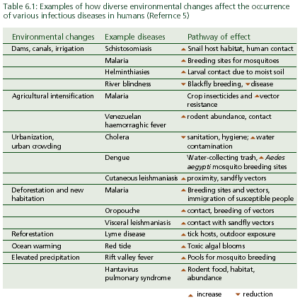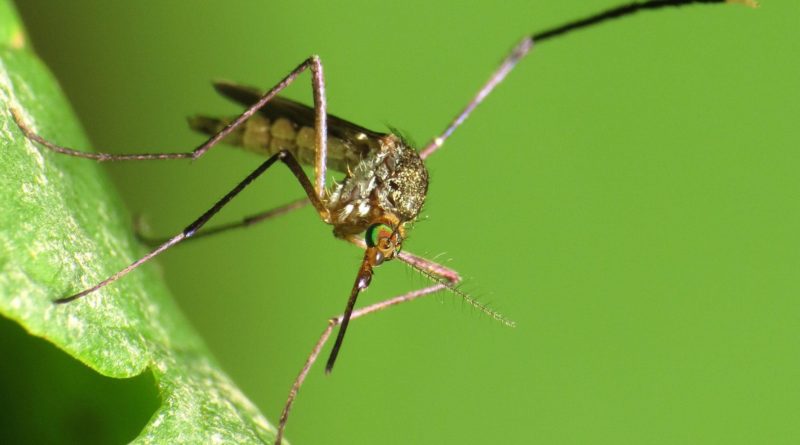What do Michael Phelps and a Mosquito Have in Common?
Photo By Katja Schulz/CC By 2.0
Carly Nicholson| July 13, 2016
Freestyle swimming. Sort of. Mosquitos breed in standing water less than 24 inches deep, a depth even Phelps couldn’t master. These true flies have the potential to host a plethora of diseases including Zika Virus, Westnile Virus and Malaria. Over the last year, Zika Virus has become a concern in the United States. Greater than 1,000 cases have been reported as of July 6, 2016, all acquired overseas. What does this mean and why do we care? Let’s take a closer look at our little biting friends.
Where does Zika come from?
Zika Virus was first discovered in 1947; derived from the Zika Forest in Uganda, it wasn’t until five years later that the first human contracted Zika. Female mosquitoes transmit the virus when their prey is bitten. Not all female mosquitoes harbor disease, only the Aedes species. Most arthropod-borne viruses, like Zika, began in birds or primates as “part of the syvatic cycles,” notes Joseph Conlon from the American Mosquito Control Association, “we have here our classic chicken/egg scenario.”
What health effects are associated with Zika?
Zika Virus is commonly associated with symptoms of mild fever, rash, joint pain and conjunctivitis. As you might have picked up, many symptoms of Zika are vague. One could easily believe they have Zika, but it could just be the flu or a cold. On a positive note, few seek medical attention when faced with Zika and even fewer cases result in death. Pregnant women are at the highest risk. If infected, either by mosquito or sexual contact with an influenced male, the baby may be born with an abnormality of the cranial size.
Why do we care?
As a concerned citizen, I wonder what affects climate change has on public health. Off hand, things like increased rainfall and carbon dioxide, deforestation and reforestation come to mind, all climate induced issues (see chart below for more examples and their associated diseases).

In the case of Zika, rainfall and temperature weigh heavy on the livelihood of mosquito survival. Heavy rainfall in Paraguay, Uruguay, Argentina, and southern Brazil towards the end of 2015 provided a safe environment for Zika and other mosquito-borne diseases. El Niño, a regular warming of the ocean off the coast of western South America (occurring every 2-7ish years), didn’t help. Travelers became infected then unbeknownst to them, headed home bringing the virus with them.
But really, why should YOU care? I mean, it’s not a deadly virus and you (likely) live in the United States. What gives? Well, South America is full of developing countries that struggle with poverty and pollution. Without adequate resources for dealing with river flooding and excess rainfall, people get displaced. Another name for these displaced people are climate refugees, those forced to move to other parts of their country to seek safety from disease and other effects of climate change. In some cases, without a clear place to go, where do the people of these countries turn: developed countries.
In closing, repercussions of climate change are happening everywhere. Just because it isn’t happening in your backyard, doesn’t mean it isn’t occurring in other places. Next time you take a stroll around the neighborhood post thunderstorm, help your neighbor out, empty that bird bath, won’t you?
Citations:
“About Zika Virus Disease.” Centers for Disease Control and Prevention. February 22, 2016. Accessed July 11, 2016. Web. http://www.cdc.gov/zika/about/index.html.
“Climate Change and Infectious Diseases.” WHO. Accessed July 11, 2016. Web. http://www.who.int/globalchange/climate/summary/en/index5.html.
“Diseases Transmitted by Mosquitoes.” Diseases Transmitted by Mosquitoes. Accessed July 11, 2016. Web. http://npic.orst.edu/pest/mosquito/diseases.html.
“Mosquito Question.” E-mail message to author. June 6, 2016.
Sutherland, Andrew. “Mosquito Management for Ponds, Fountains and Water Gardens.” Green Blog (blog), July 12, 2012. Accessed July 11, 2016. Blog. http://ucanr.edu/blogs/blogcore/postdetail.cfm?postnum=10847.
Top Questions on Zika: Simple Answers. July 7, 2016. PDF. http://www.astho.org/Infectious-Disease/Top-Questions-On-Zika-Simple-Answers-Developed-by-ASTHO/
“Zika Virus Disease in the United States, 2015–2016.” Centers for Disease Control and Prevention. 2016. Accessed July 11, 2016. Web. http://www.cdc.gov/zika/geo/united-states.html.

